This is the PowerReviews monthly snapshot trends report for April 2021, an analysis of consumer activity across more than 1.5MM online product pages from more than 1,200 retail/brand sites.
We started measuring at the start of Covid. To recap, a huge initial surge led to an overall 3x increase in online purchase volumes between February (pre-pandemic) to May 2020. However, the subsequent four months through to October led to a steady decline and then stabilization, with purchase volumes consistently between 40% and 70% higher than they were pre-pandemic (we actually re-aligned our reports to three month periods due to this stabilization).
We then saw a slight uptick in preparation for the Holidays (remember: shopping was expected to start early this year).
Then onto the Holidays, when the typical marked seasonal increase materialized, before a return to Covid-era normality despite the continuing vaccine rollout.
Key ecommerce market trends
01
02
03
More of the same as online purchase volumes and site traffic continue at “Covid-norm” levels
Prior to the Holidays, consumer behavior had clearly become more predictable, with purchase volumes consistently around 1.4x to 1.7x where they were before the pandemic (this was after a giant surge in April, May and June). So remember that is the baseline we’re dealing with in the chart below.
After the Holiday surge, ecommerce purchase volumes settled to similar levels to where they were pre-Holiday in January, February and this continued into March (i.e. in the range of 1.4x to 1.7x where they were pre-Covid).
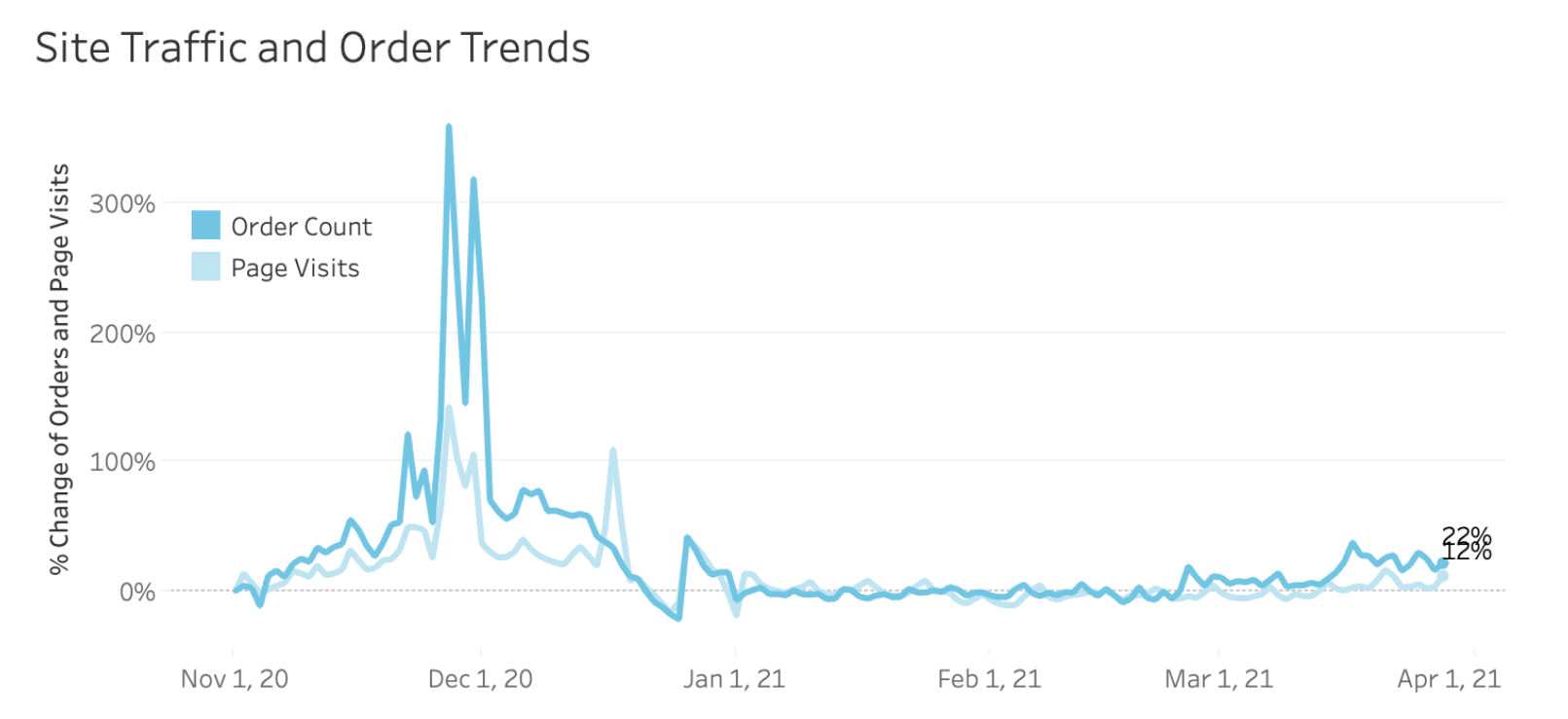
Review Submission Volumes Consistently Up on Pre-Holiday Levels
In our Post-Holiday snapshot, we highlighted a giant surge in review volumes – largely to be expected given the seasonal purchase increases that occur at this time of year.
However, overall review volumes are up slightly on where they were before the Holidays – and this has consistently been the case over the past three months (i.e. after the end of the Holiday period).
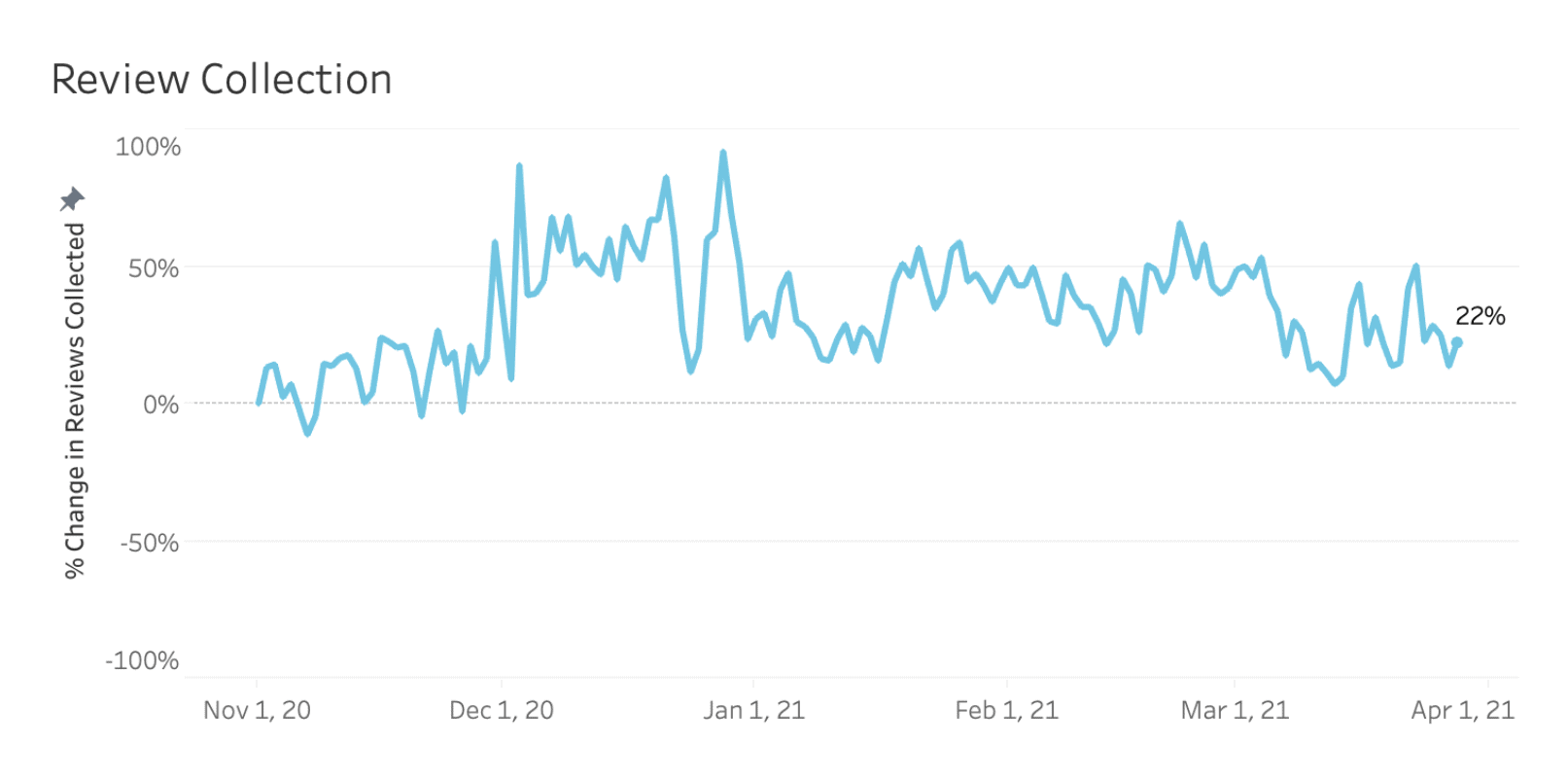
Review length and sentiment continues to be stable
At the risk of sounding like a broken record, review length and sentiment (in the form of average rating) remains flat. This has been the case since we started our analysis a year ago.
So although Covid’s impact on ecommerce generally has been transformational, it has not affected the content of reviews submitted by consumers.
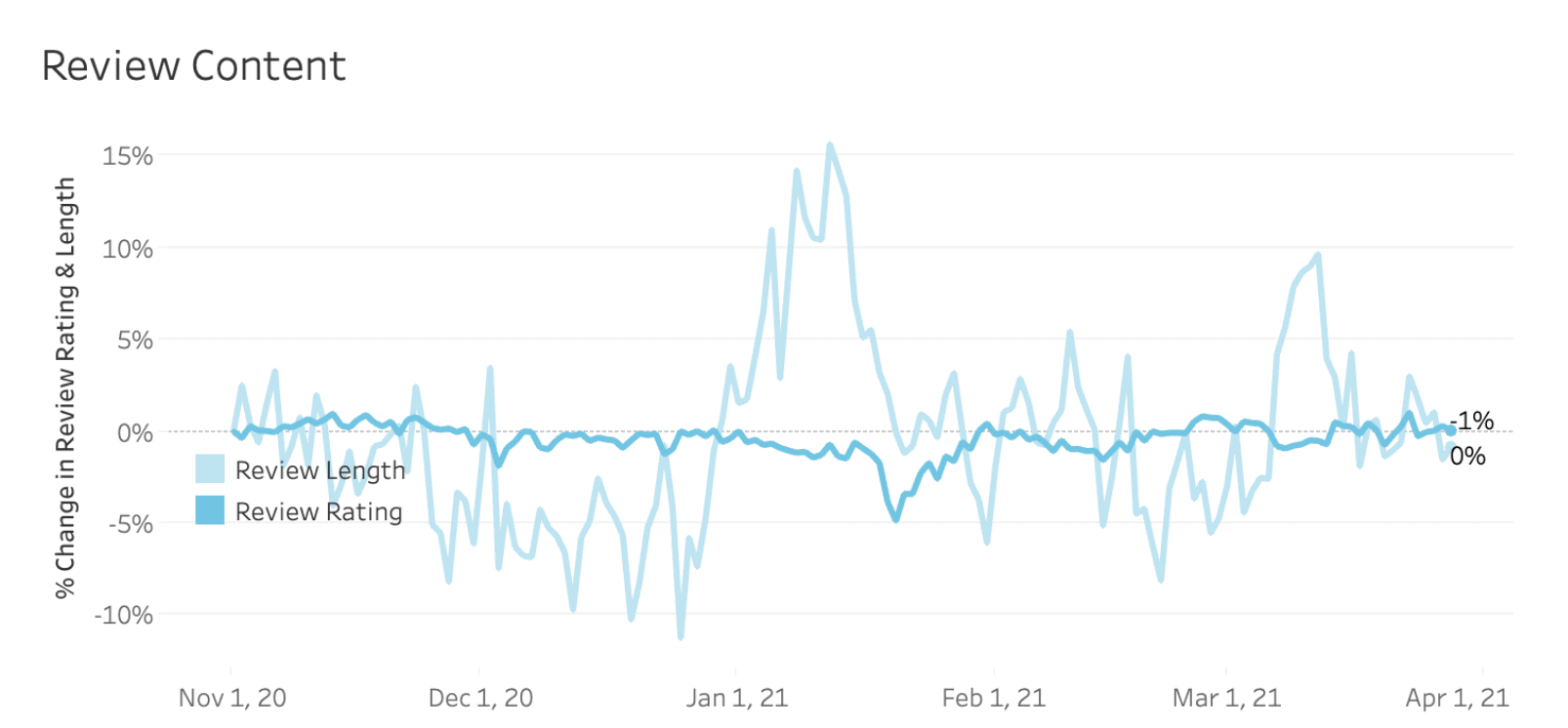
Reviews driving purchases more than they were pre-Covid
Over the last few monthly snapshots, we have included a deep dive into the impact of review content on the buyer journey – paying particularly close attention to year-on-year comparisons during the Holidays.
To recap, the charts in this section highlight the percentage of online shoppers who go onto purchase after they’ve interacted with review content (i.e. searched, filtered, clicked to extend the review from preview to view entire content etc.)
We found that review interactors consistently converted at around a 25% higher rate than they were a year previously (the conversion figure is typically around 5.25% in the three months prior to Black Friday 2020 compared to around 4.25% in the same period in 2019).
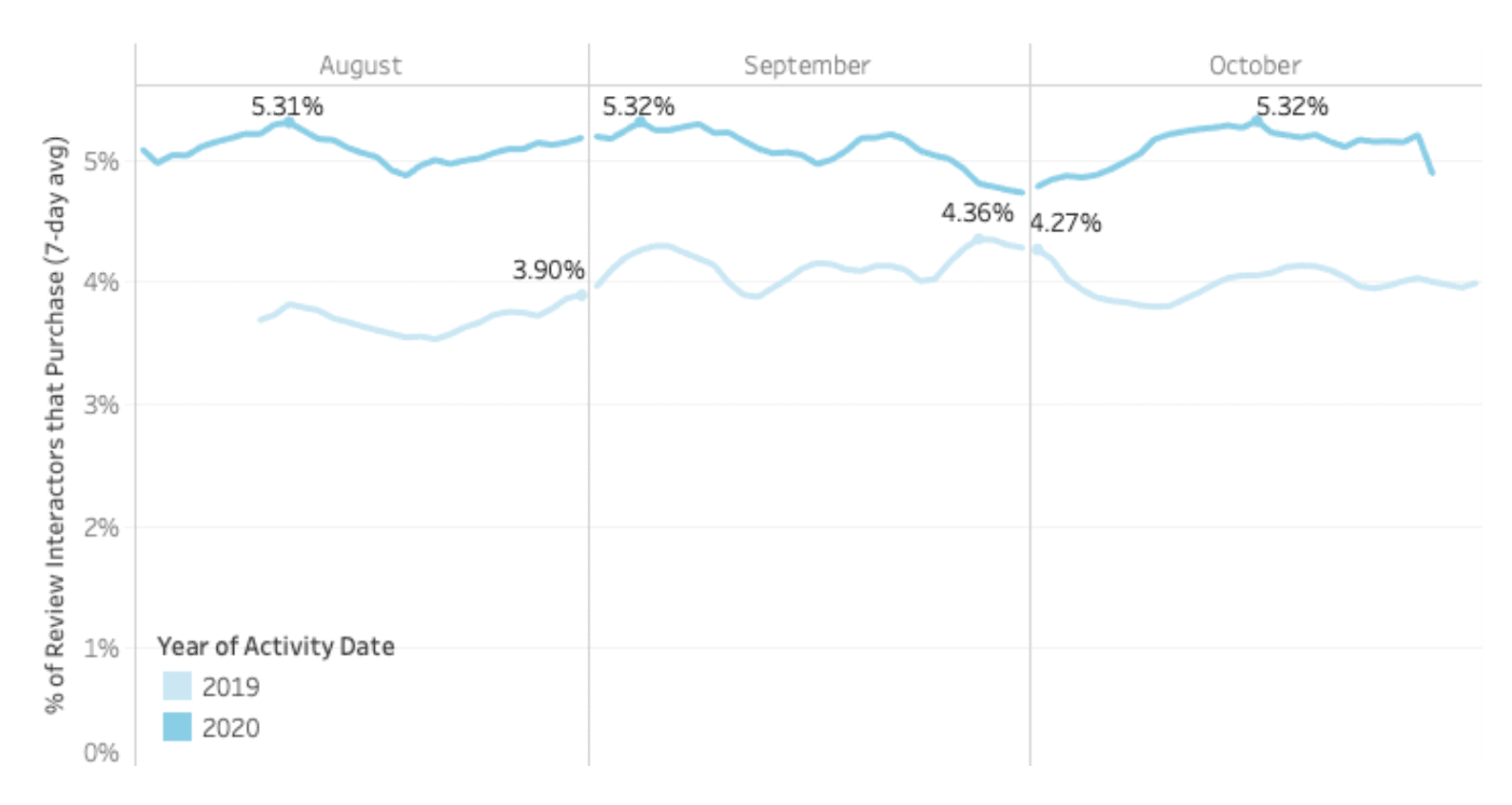
For context, this figure had come down from its Covid peak (as also demonstrated below) of 6.85% in April 2020. This is in line with when we saw the highest ecommerce purchase volumes (when they hit a peak of 210% above where they were pre-COVID at this time).
Through March, the influence of reviews on the buyer journey climbed steadily, peaking at 4.86% of review interactors going on to make a purchase. As a reminder, the figure for March 2020 – highlighted for year-on-year comparisons – was the start of Covid when we saw unprecedented growth across all our ecommerce metrics.
For context, this is between the pre and mid-Covid norms (4.25% and 5.32% respectively, as illustrated above).
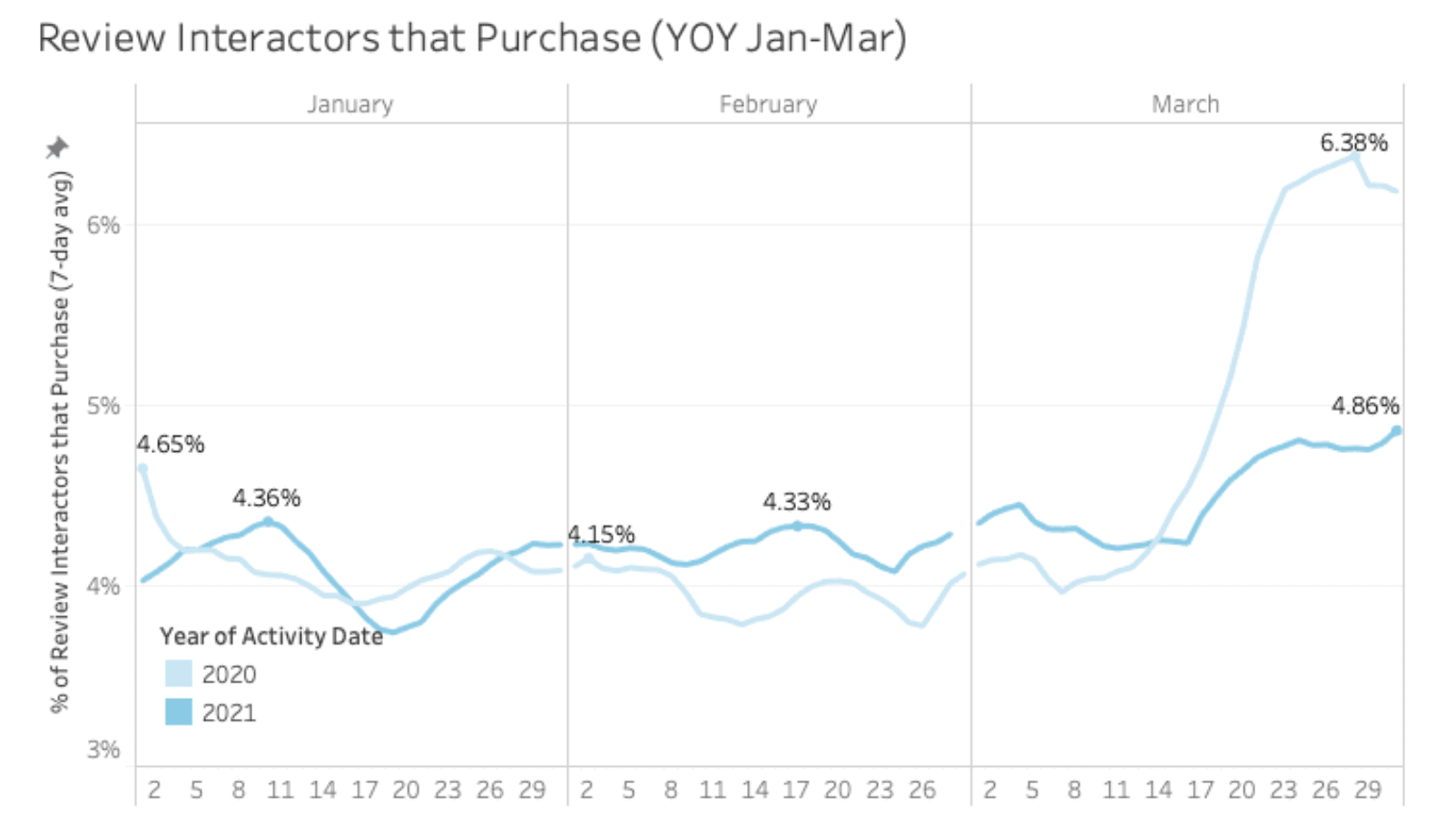
Summary
In summary, we noted the following clear trends:
- Purchase volumes and product page traffic stabilized at similar levels to pre-Holidays (at around between 1.4x and 1.7x where they were pre-Covid)
- Review impact on purchase behavior crept back up after a temporary post-Holiday lull.
- Steady overall increase in review submission levels since early November
As we mentioned in last month’s report, 2020 is likely to have accelerated the transition online like no other event in the Internet age. More sustainable growth is likely post-Covid – as the below projected chart from eMarketer outlines.
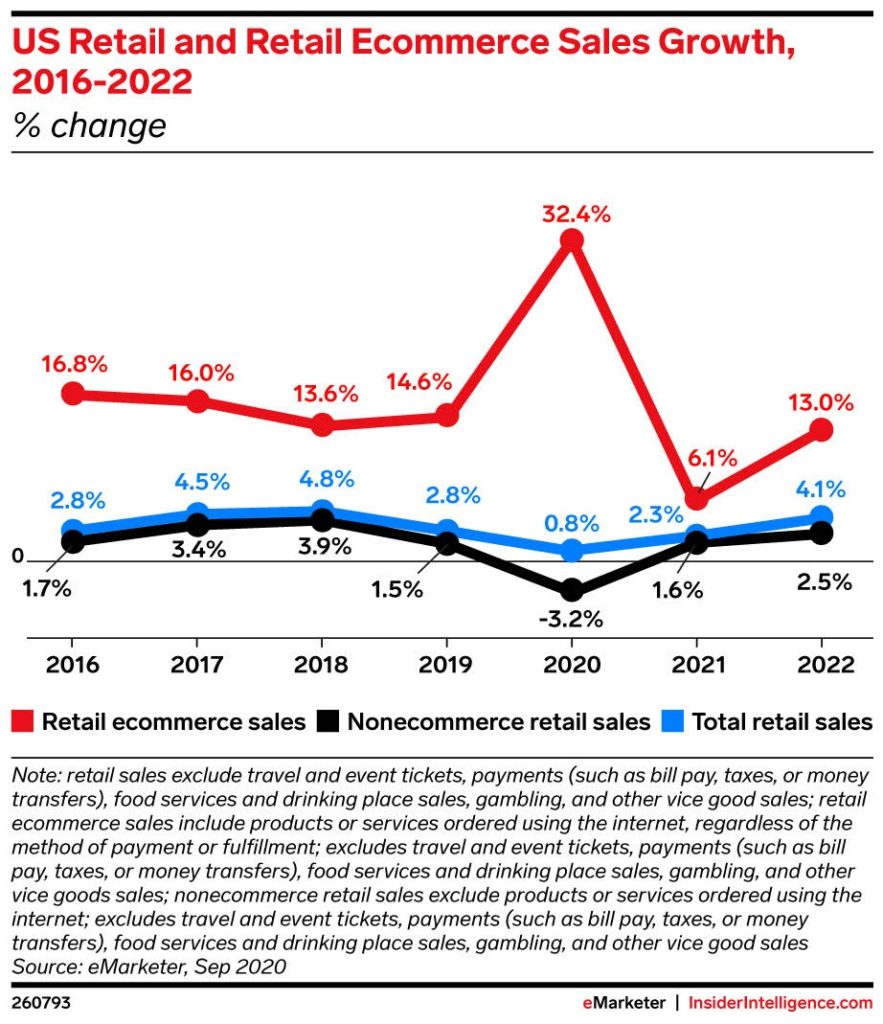
In fact, eMarketer predicts that ecommerce growth in 2021 will be significantly less than half of where it was in 2019. However, coming off the back of the biggest year of ecommerce growth in history (32.4% year-on-year according to eMarketer), the overall trend of an increasing share of dollars being spent online (compared to instore) is a continuing and unpreventable process.





